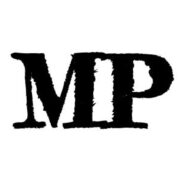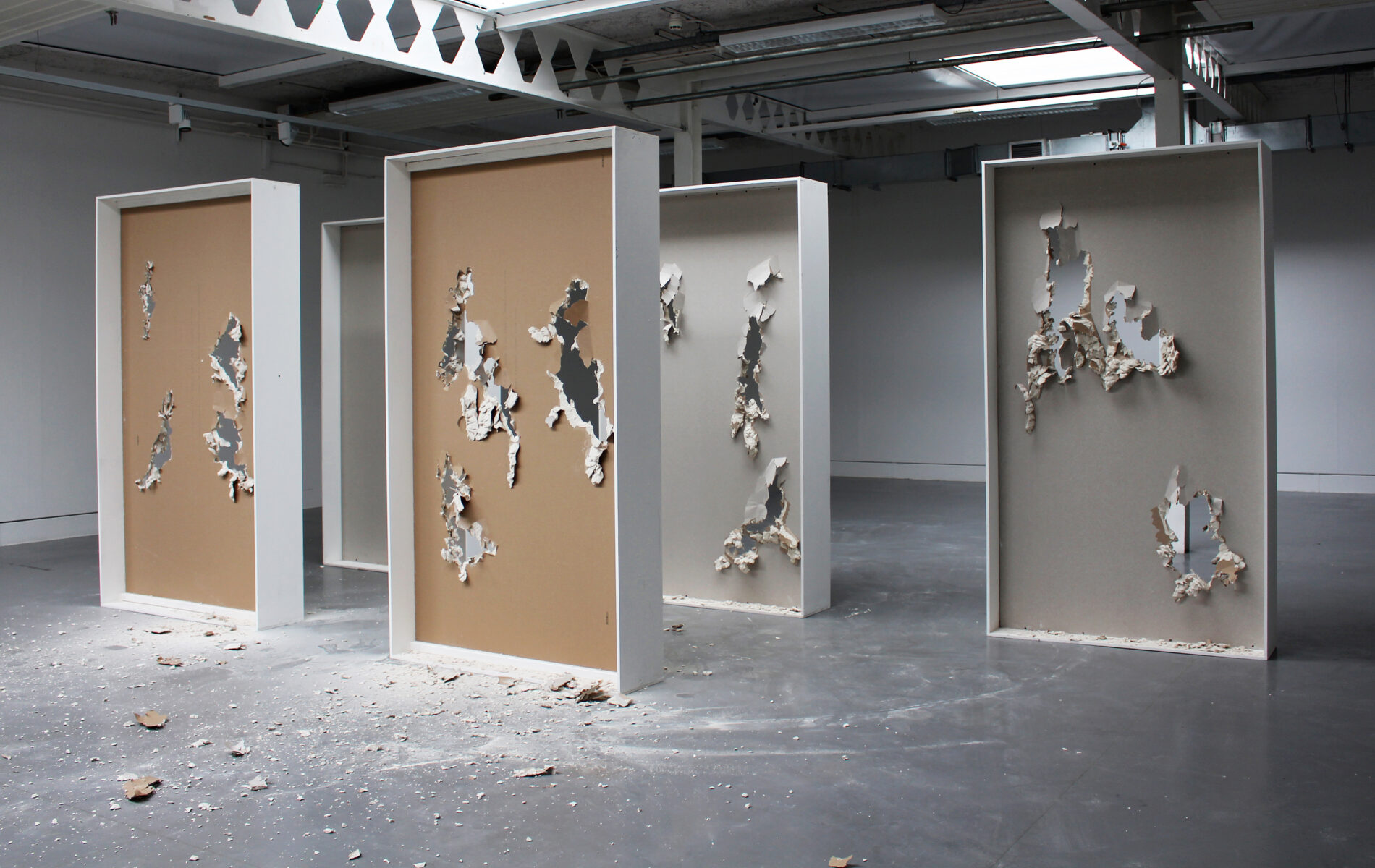
Image courtesy of Herbert Read Gallery
As he prepares for a group show at Lewisham Arthouse Joseph Clarke checks in with Erik Sommer to talk about investigating instability, exploring space and context, researching historic art movements, and the documentation of process.
Writing and researching have become integral to my practice.
(ES) Describe your work for us.
(JC) I am exploring the effect of material displacement and the relationship between art and site through certain means of de-contextualising matter synonymous with construction and industrialism. A lot of what we frequently encounter within the landscape has become conceptually disregarded. It is an overfamiliarity we have with them which often masks their presence. By removing these objects and materials from their original place of belonging it can shift our sense of perspective. I am interested in working at the distinction and the intersection between art, architecture, sculpture and engineering.
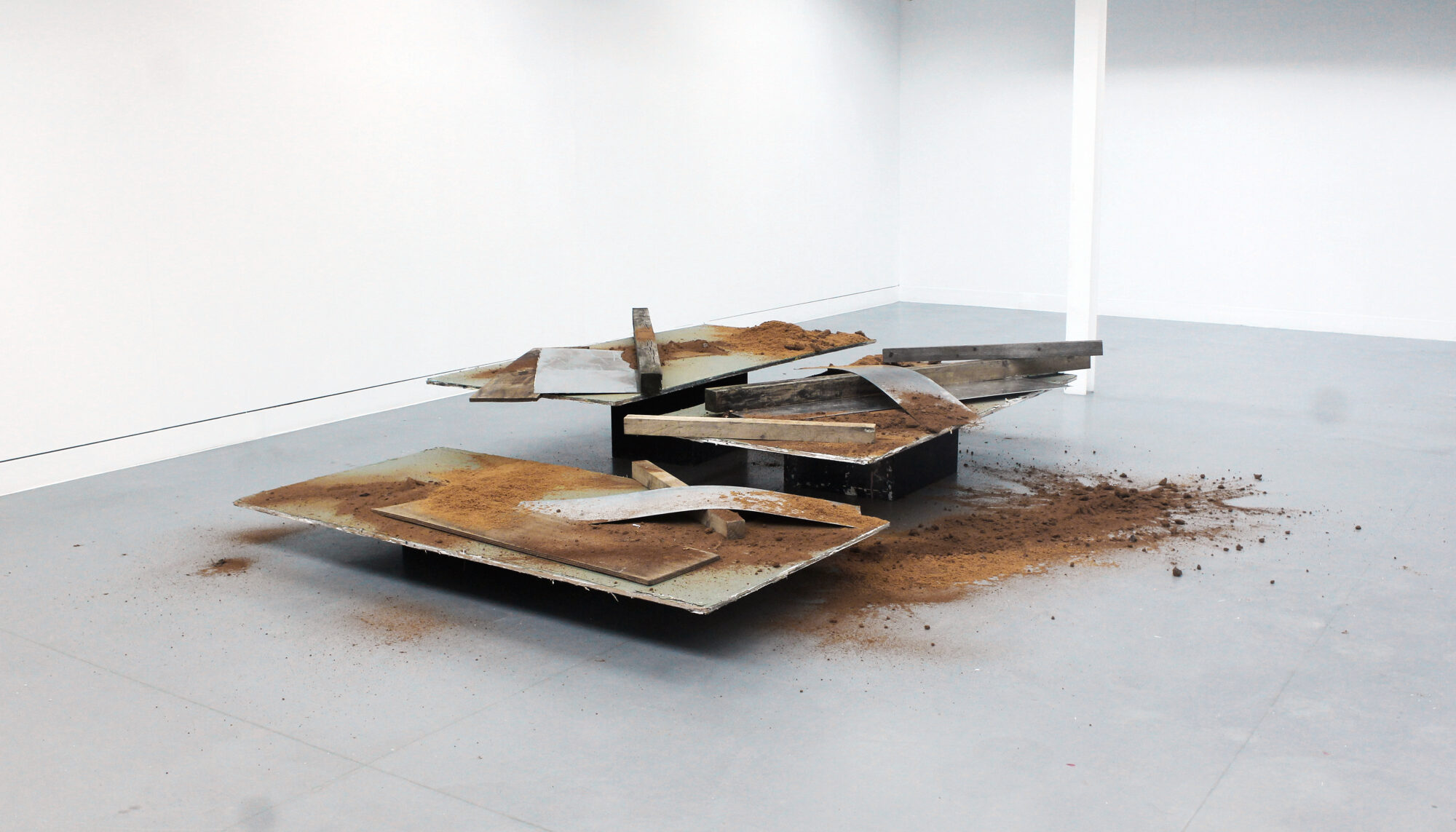
Image courtesy of Herbert Read Gallery
Tell us a bit about your background. Where did you grow up?
I grew up in a rural part of South East England, near a small coastal town. I left school at 15 having decided to do a Diploma in Visual Communication. I then went on to do an Illustration degree in Bristol followed by a Masters in Fine Art. After graduating I moved to London and have been working here since.
How do you think this has influenced your work?
I vividly recall my tutor bringing me books on the Bauhaus, Constructivism and Brutalism. The subsequent period of time spent researching particular historic art movements remains significant. The early engagement I had with these alternate ways of communicating combined with what my father taught me, in terms of working with metals and carpentry, have shaped my output today.
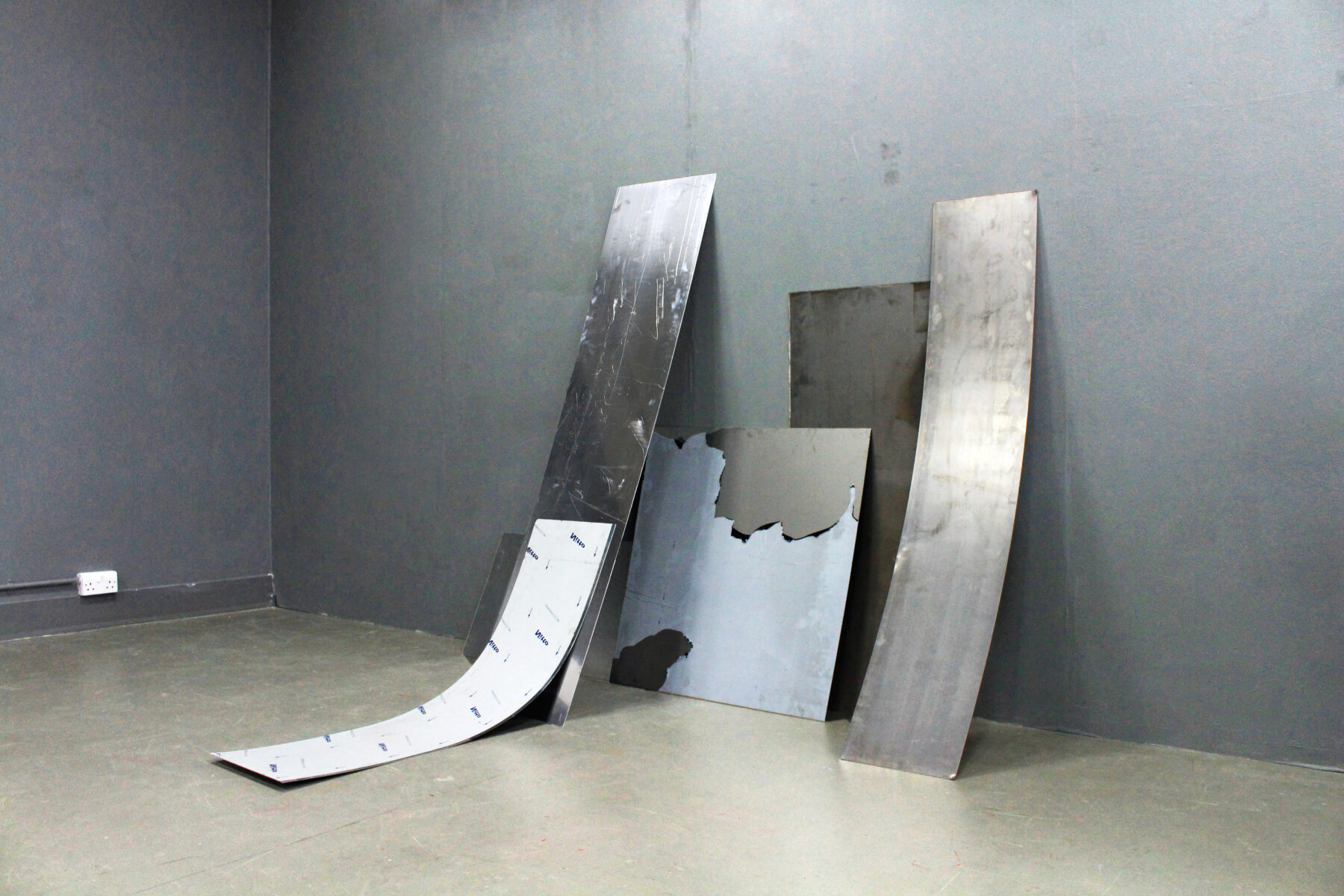
Image courtesy of Kirk Lecture Theatre
You have used different mediums to help express your ideas, from sculpture to film, performance to painting. Do you see yourself continuing in this way?
I think these are all premises which belong to the title of artist. The performative work was more so intended to be a documentation of process. A multifaceted approach is one which came naturally without deliberation.
You have talked about how the distressing of material helps make the work strong. Can you elaborate on this?
It depends on how strength is defined: physically, theoretically or visually. Investigating structural or material instability interests me as well as the implications of removing the intended functionality of objects.
What is your normal studio practice like? Any routines or superstitions?
Developing process and ideas that could translate to a scaled-up interpretation intended for viewing, rather than making final works. Writing and researching have become integral to my practice.
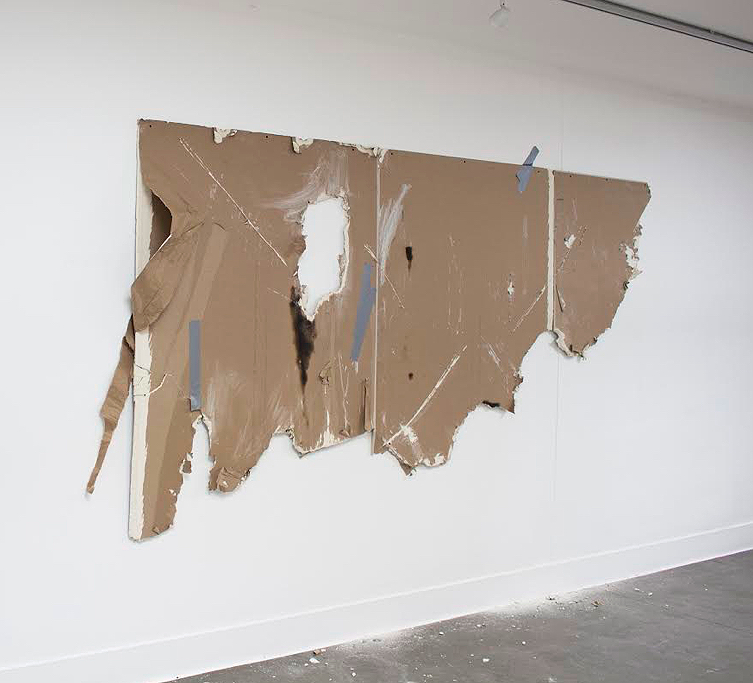
Image courtesy of Herbert Read Gallery
What about your working technique? Walk us through how you start and then develop a piece.
Exploring the space and context a work will exist in is a starting point, site-specific in a sense. The bulk of my sculptural output has been constructed in-space and therefore gives the work an ephemeral quality as it is frequently dismantled post viewing or after documentation.
What excites you the most about the current art world?
Amongst all the current uncertainty it is inspiring to see other practitioners maintain a level of productivity.
Any recent or upcoming projects?
A group show titled ‘Hant’ opening on October the 8th at Lewisham Arthouse, London.
To see more of Joseph Clarke’s work visit his website and Instagram page.
